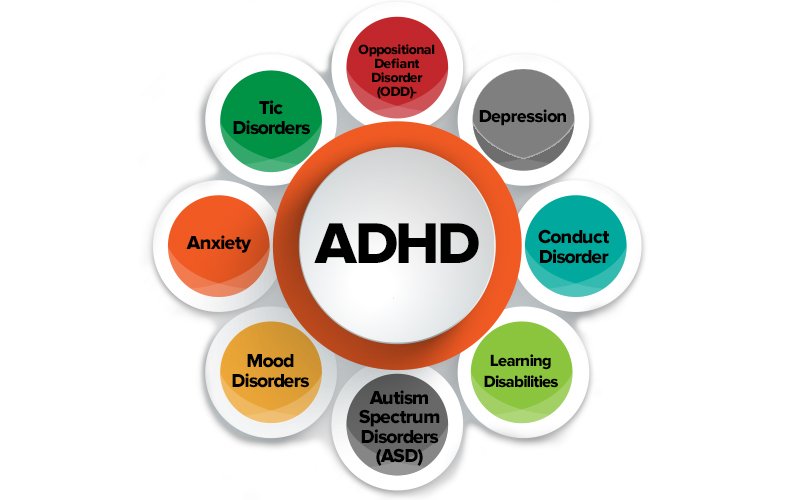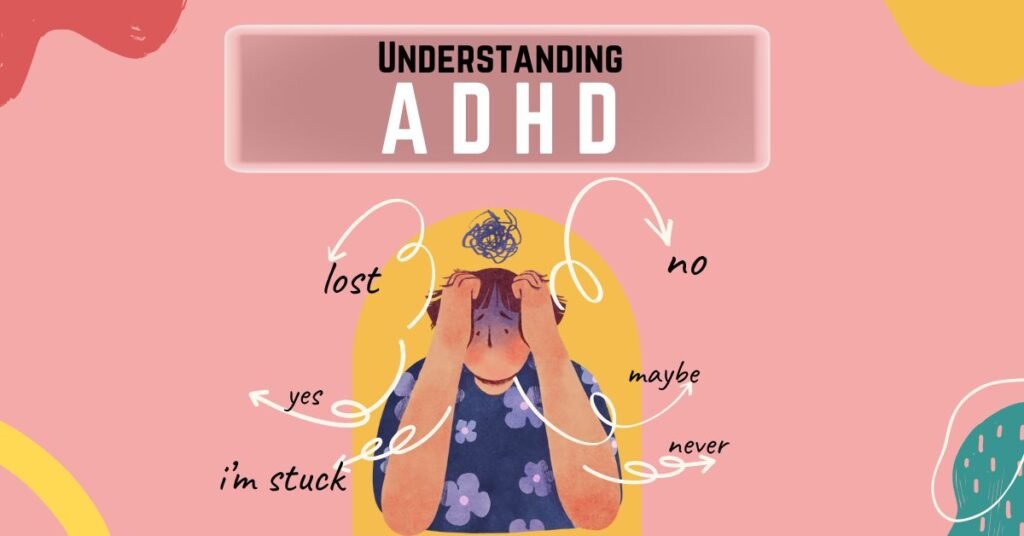Another key strategy is the use of sensory breaks. These breaks involve stepping away from overwhelming stimuli to engage in activities that provide sensory comfort. Deep breathing exercises, progressive muscle relaxation, or even taking a short walk outdoors can help reset the nervous system and alleviate the effects of sensory overload.
Incorporating regular sensory breaks into daily routines can promote emotional regulation and prevent feelings of sensory overwhelm from becoming unmanageable.
Incorporating mindfulness techniques can also be beneficial for managing sensory overload. Mindfulness involves cultivating awareness of the present moment without judgment. This practice can help individuals with ADHD become more attuned to their sensory experiences and better able to recognize the early signs of overload.
By developing this self-awareness, individuals can implement coping strategies before the situation becomes overwhelming. Mindfulness can also promote better impulse control and attention regulation, making it a valuable tool in managing sensory overload.
Time management and organization strategies are crucial in preventing sensory overload. Individuals with ADHD often struggle with transitioning between tasks and managing their time effectively.
Breaking tasks into smaller, manageable steps and using visual cues or reminders can help reduce the cognitive load and prevent the accumulation of stress that can lead to sensory overload. Additionally, adhering to a structured routine can provide a sense of predictability, reducing the likelihood of unexpected sensory triggers.
Seeking professional guidance is another important step for individuals with ADHD dealing with sensory overload. Mental health professionals, such as therapists or psychiatrists, can provide tailored strategies and interventions to address sensory overload and its impact on an individual’s well-being.
They may recommend cognitive-behavioral therapy (CBT), which can help individuals reframe their thoughts and reactions to sensory stimuli, ultimately reducing the distress associated with overload.
It’s also important for individuals with ADHD to communicate their needs to those around them. Friends, family members, coworkers, and teachers can provide crucial support by understanding and respecting an individual’s sensory sensitivities. Educating those in their social circle about ADHD and sensory overload can foster a more empathetic and accommodating environment.
Sensory overload is a common experience for many individuals, but for those with Attention Deficit Hyperactivity Disorder (ADHD), it can be an even more challenging and overwhelming phenomenon. ADHD is a neurodevelopmental disorder that affects a person’s ability to regulate attention, impulsivity, and hyperactivity.
One of the lesser-known aspects of ADHD is how it intersects with sensory processing, making sensory overload a significant concern for many individuals with the condition. Understanding the dynamics of sensory overload and learning effective strategies to navigate it can greatly improve the quality of life for individuals with ADHD.
About ADHD
ADHD is characterized by symptoms such as inattention, impulsivity, and hyperactivity. However, many people are unaware that sensory processing difficulties are also a hallmark of ADHD. Individuals with ADHD often experience heightened sensitivity to sensory stimuli, which can include sights, sounds, textures, and even emotional cues.
This heightened sensitivity can lead to sensory overload, where the brain becomes overwhelmed by the sheer volume and intensity of sensory information coming in from the environment.
About Sensory
Sensory overload is a common challenge for individuals with Attention Deficit Hyperactivity Disorder (ADHD). This condition can significantly impact their daily lives, making it difficult to perform routine tasks or engage in social interactions. Understanding the nature of sensory overload and its effects on those with ADHD is crucial for developing effective strategies to manage this condition.
At its core, sensory overload occurs when the brain receives more sensory information than it can process at one time. For individuals with ADHD, this overload can be particularly overwhelming.
Their brains often struggle to filter out irrelevant stimuli, which means they are constantly bombarded with sensory input from their environment. This unfiltered stream of information can include sounds, sights, smells, textures, and even internal sensations like hunger or fatigue.
One of the primary reactions to sensory overload in individuals with ADHD is increased restlessness. This restlessness is not just physical but can also be mental. The constant influx of sensory information can make it hard for the brain to settle on a single task or thought.
As a result, individuals may feel an uncontrollable urge to move, fidget, or change activities frequently. This can be particularly challenging in settings that require sustained attention, such as classrooms or workplaces.
Difficulty concentrating is another significant effect of sensory overload. When the brain is overwhelmed by sensory input, it has a harder time focusing on the task at hand.
This can lead to a scattered thought process and frequent distractions. For someone with ADHD, this can mean that even simple tasks take much longer to complete, and the quality of work may suffer. The inability to concentrate can also cause frustration and a sense of inadequacy, further exacerbating the problem.
Irritability is a common emotional response to sensory overload. The constant bombardment of sensory input can be exhausting, and the resulting fatigue can lower an individual’s tolerance for frustration.
Small annoyances can quickly escalate into significant irritations, leading to emotional outbursts or a general sense of grumpiness. This irritability can strain relationships with family, friends, and colleagues, as others may not understand the root cause of the individual’s emotional state.
In more severe cases, sensory overload can lead to emotional meltdowns. These meltdowns are intense emotional reactions that can involve crying, yelling, or even physical aggression.
They occur when the individual reaches a breaking point and can no longer manage the overwhelming sensory input. Meltdowns can be distressing for both the individual and those around them, and they often leave the person feeling drained and ashamed afterward.
The cumulative effect of sensory overload can be detrimental to daily functioning and overall well-being. When sensory overload is a frequent occurrence, it can lead to chronic stress and anxiety.
The constant state of hyper-awareness and the effort required to manage sensory input can leave individuals feeling perpetually exhausted. This chronic fatigue can impact their physical health, leading to issues like headaches, digestive problems, and weakened immune function.
Managing sensory overload in individuals with ADHD requires a multifaceted approach. Environmental modifications can be beneficial in reducing sensory input. For example, creating a quiet, clutter-free workspace can help minimize distractions.
Using noise-canceling headphones or soft background music can also help filter out distracting sounds. Additionally, allowing for regular breaks during tasks can give the brain a chance to reset and recover from sensory overload.
Sensory integration therapy is another effective strategy. This type of therapy helps individuals with ADHD learn to process and respond to sensory input in a more regulated manner.
Through structured activities and exercises, sensory integration therapy can improve the brain’s ability to filter and prioritize sensory information. This can lead to better concentration, reduced restlessness, and improved emotional regulation.
Mindfulness and relaxation techniques can also play a role in managing sensory overload. Practices such as deep breathing, meditation, and progressive muscle relaxation can help calm the nervous system and reduce the overall sense of overwhelm. Teaching individuals with ADHD these techniques can provide them with valuable tools for managing sensory overload in real-time.
Support from family, friends, and educators is crucial in helping individuals with ADHD cope with sensory overload. Understanding and patience from loved ones can make a significant difference in how individuals manage their symptoms. Educating those around them about sensory overload and its effects can foster a more supportive and accommodating environment.
In conclusion, sensory overload is a significant challenge for individuals with ADHD, impacting their ability to concentrate, regulate emotions, and function effectively in daily life.
By understanding the nature of sensory overload and implementing strategies to manage it, individuals with ADHD can improve their well-being and overall quality of life.
nvironmental modifications, sensory integration therapy, mindfulness techniques, and support from loved ones all play vital roles in helping manage the effects of sensory overload.
Recognizing Signs of Sensory Overload
Recognizing the signs and symptoms of sensory overload is crucial for effectively managing and addressing this condition. These manifestations can vary widely among individuals but generally include:
1. **Physical discomfort:** Sensory overload often triggers physical sensations such as headaches, muscle tension, fatigue, or even pain due to heightened sensitivity to stimuli.
2. **Emotional distress:** Individuals may experience mood swings, irritability, anxiety, or emotional outbursts when overwhelmed by sensory input. The brain’s struggle to process sensory information can contribute to these emotional reactions.
3. **Reduced focus and attention:** Difficulty concentrating, staying on task, or engaging in meaningful conversations can result from sensory overload. The overwhelming stimuli make it challenging for the brain to filter and prioritize information effectively.
4. **Avoidance behaviors:** Some individuals may develop avoidance strategies to cope with sensory overload, such as withdrawing from noisy or crowded environments. This behavior can lead to social isolation and impact daily activities and relationships.
5. **Heightened arousal:** Sensory overload can trigger a heightened stress response, characterized by increased heart rate, shallow breathing, restlessness, or a sense of agitation. These physiological reactions reflect the body’s attempt to manage overwhelming sensory input.
By recognizing these signs and symptoms, individuals, caregivers, and healthcare professionals can implement strategies to mitigate sensory overload effectively. Creating supportive environments, practicing sensory regulation techniques, and fostering understanding and accommodation can significantly improve quality of life for those affected by sensory processing challenges.
Strategies for Managing Sensory Overload
Managing sensory overload for individuals with ADHD requires a multifaceted approach that combines self-awareness, environmental modifications, and coping strategies. Here are some effective strategies to consider:
Self-awareness: Developing an understanding of one’s sensory triggers is essential. Keep a journal to note situations, environments, and specific stimuli that lead to sensory overload. This can help identify patterns and tailor coping strategies accordingly.
Sensory breaks: Implement regular sensory breaks throughout the day. Engage in activities that provide calming sensory input, such as deep breathing exercises, gentle stretching, or spending time in a quiet, dimly lit space.
Environmental adjustments: Make changes to your immediate surroundings to reduce sensory input. Use noise-canceling headphones, dim the lights, or create a clutter-free workspace to create a more comfortable environment.
Time management: Break tasks into smaller, manageable segments to prevent becoming overwhelmed. Set timers or alarms to remind yourself to take breaks and refocus.
Mindfulness and relaxation techniques: Practicing mindfulness meditation, progressive muscle relaxation, or guided imagery can help regulate sensory input and promote emotional well-being.
Social communication: Communicate your needs to friends, family, and colleagues. Let them know about your sensory sensitivities and how they can support you in managing them.
Utilize fidget tools: Fidget toys or tools like stress balls can provide a constructive outlet for excess energy and help manage sensory input.
Structured routines: Establish consistent daily routines that provide a sense of predictability. Knowing what to expect can reduce anxiety and help in preparing for potentially overwhelming situations.
Healthy lifestyle choices: Regular exercise, proper nutrition, and adequate sleep contribute to overall well-being and can help regulate sensory sensitivities.
Professional support: Consult a healthcare professional, therapist, or occupational therapist who specializes in ADHD and sensory processing difficulties. They can provide personalized strategies and interventions tailored to your needs.
Conclusion
In conclusion, managing sensory overload can present unique challenges for individuals with ADHD, who already contend with difficulties in attention regulation and impulse control.
However, there are effective strategies that can help mitigate the impact of sensory overload:
1. **Creating a sensory-friendly environment:** Minimizing distractions, controlling lighting and noise levels, and organizing spaces can create a more manageable environment for individuals with ADHD.
2. **Taking sensory breaks:** Engaging in activities that provide sensory input or relaxation, such as deep breathing exercises, stretching, or listening to calming music, can help regulate sensory processing.
3. **Practicing mindfulness:** Techniques like mindfulness meditation can enhance awareness of sensory experiences and help individuals respond more calmly to overwhelming stimuli.
4. **Managing time effectively:** Breaking tasks into smaller, manageable steps and using timers or reminders can support focus and productivity amidst sensory challenges.
5. **Seeking professional help:** Consulting with healthcare professionals, such as occupational therapists or psychologists specializing in ADHD and sensory processing, can provide personalized strategies and support.
6. **Communicating needs:** Advocating for oneself by expressing sensory preferences and needs to peers, teachers, employers, or family members fosters understanding and facilitates accommodations.
By incorporating these strategies into daily routines, individuals with ADHD can regain a sense of control, reduce stress levels, and enhance their overall well-being. Effective management of sensory overload not only improves daily functioning but also supports long-term success and quality of life for individuals navigating the complexities of ADHD.




